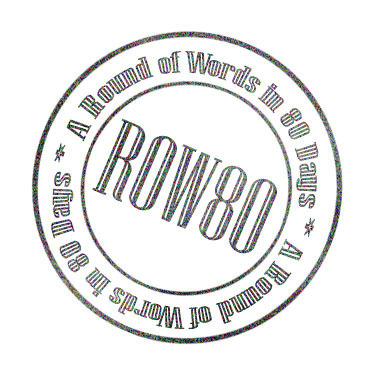Author’s Log: Plot vs Character (#ROW80)
Pretty simple, right? Yet, this past month or so as I was burning my way through Waking Muse #1, I was reminded once again that there are a multitude of ways to approach story development. Notice I said “story” development, not “plot” development, though there are a variety of ways to develop plot, as well.
My Keepers of the Flame series, for example, are action stories set in an apocalyptic world, with a side order of romance. These stories, then, are plot-driven. This doesn’t mean I’m sciving off on the character development, oh no! But action stories are like action movies, so my approach to these is going to be vastly different than my approach to something like Waking Muse #1, which is character-driven.
For Keepers, I use screenwriting techniques to develop the story. I have character sketches, sure–in addition to back stories, props and wardrobe. I “cast” my characters. My plot points are mapped on a Plot Incline on a white board, with lists of settings, characters, and important objects. (I call it my Nouns List–people, places, and things). I look for concept art to describe setting, and research those settings until I feel as though I could travel there and feel fairly confident I know where I’m going, and what to expect. I use beat sheets to brainstorm and navigate my way from Plot Point to Plot Point. I decide whether the character arc layer is going to follow a Mystic or Heroic Journey. The major conflict comes from an outside source, which then drives character conflicts. Then I spice it up with a variety of special effects. For me, an action story unfolds visually, like a movie.
Waking Muse #1 was a whole ‘nother kettle of words, because it was fully character-driven. The external conflict came from other characters which then drives internal conflict. Because the character arc is the story, each of my protagonists follow their own journeys, the Male and Female. (Interesting to note: Both a plot-driven story arc and a character-driven one encompasses nine “blocks”–three Acts, with three sections apiece.) Both the Male and Female journeys drive, in each block, what has to happen to move the character, and thus the story, forward. It also guides the conflict and stakes. In a quieter story such as this, it can be tempting to think that nothing is happening–when in fact there’s quite a lot going on. There just aren’t any explosions to announce it. 
I have to go all old school with something like this–spiral notebooks and legal pads and a really good gel pen that flows like brushstrokes. I have to sit in silence and let the music of the words come to me, because the story unfolds in the words themselves. Instead of seeing the story, I have to sit quietly and listen for it, and try to strike the right chords. An action story’s music is rock n’ roll, but a charcter story’s music is a violin concerto, or a string quartet.
In a character-driven story, the plot is the character journey, whereas in a plot-driven story, the plot drives the character journey.
It’s like the difference between Die Hard and The Hours, both movies which I really love, but which are completely different in so many ways for reasons other than just genre and target audience. There’s still character development in Die Hard, but the main conflict is external, driving the character arcs. There’s still action in The Hours, but the main conflict is between characters, which in turn pulls forward the interal conflict with self. The Hours is a really excellent study of character driven story built in a ripple effect, where the ripples reach through time from the core of a single character’s conflicts. Its resonance is breathtaking, yo. Even if it’s not your sort of film, if you’re a storyteller of any kind, I recommend it as a study resource.
Keepers #2 (IN PRODUCTION): No updates, I’m afraid. This is why I highly advocate working on another project while the first is on sub or in prod. There is a LOT of waiting involved, so it behooves the savvy Writer Monkey to be constantly, and consistently, producing something. That way you have a porfolio of works in the pipeline at varying stages instead of waiting months or even a year for something to hit the shelves. Always be writing, and always be working–that’s my motto!
The Minstrel’s Daughter (DRAFTING): a.k.a. “Big Dang Projeckt”–YAY, ACT II. I’m working my way from the aftermath of Plot Point 1 (“The Siege”) at the 25% mark to Pinch Point 1 (“The Fire”) at the 37.5% mark. This is a bit I’m quite looking forward to, as I get to introduce one of my favorite characters (a supporting bad guy) and kill off one of my least favorite characters (a minor antagonist, but not a bad guy per se). Sometimes I find I need to restrain myself from making these unlikable sources of conflict TOO unlikeable, if you know what I mean. It’s fun, but not neccessarily wise. There must be some redeemable quality about them so that their deaths can be felt without the mass cheering in the stands.
Keepers #3 (IN BETA): Keepers #3 is now in the capable hands of the Stunt Monkey. I give her a list of concerns, and she turns her discerning eye on my manuscript. I then ply her with copius amounts of banana daiquiri, because rum makes everything better. Once I have her feedback in hand, I’ll revise again. This may go back and forth a couple of times, until I consider the story is at its absolute best, at which point I submit to Editor Awesome. While the Stunt Monkey does her thing, I write the cover letter (same as a query, but really a cover because for a novella the entire manuscript is submitted, not sample pages), and the dreaded synopsis (2 pages single-spaced for Samhain).
Yep, I still “query” a new manuscript, even though it’s to an editor I have a relationship with, for a publisher I’ve previously published with. There is no guarantee they’ll take a new manuscript, even if it’s part of an existing series. I garner a contract on book-by-book basis, not on spec.
The pipeline gusheth!
How about you guys? How do you decide the order of your projects? Or do you play it by ear?







